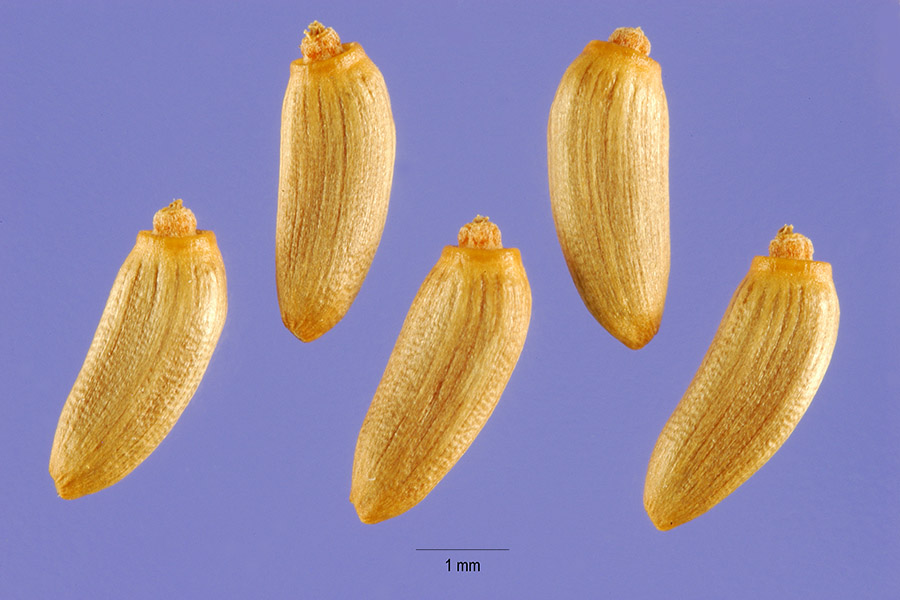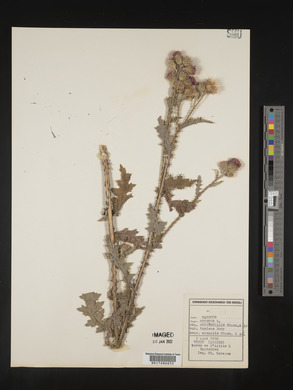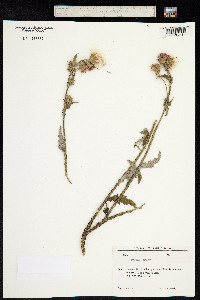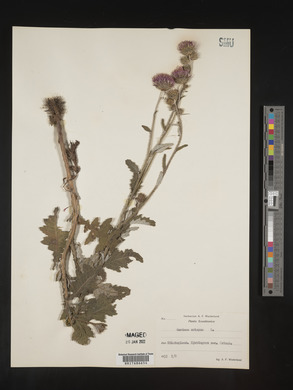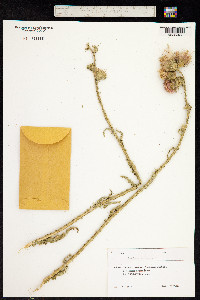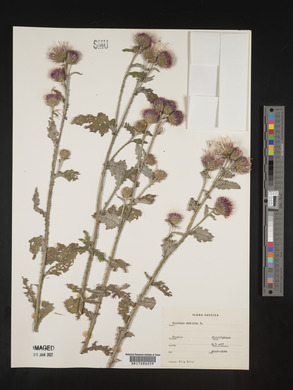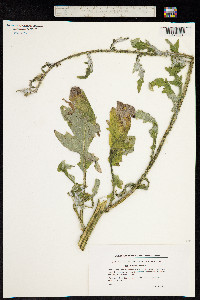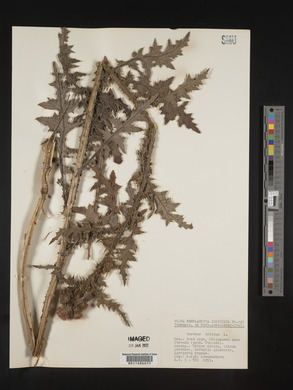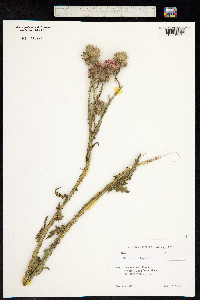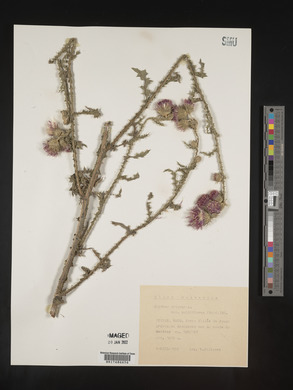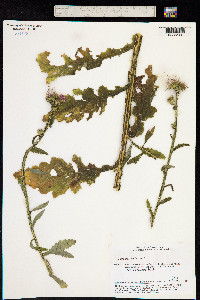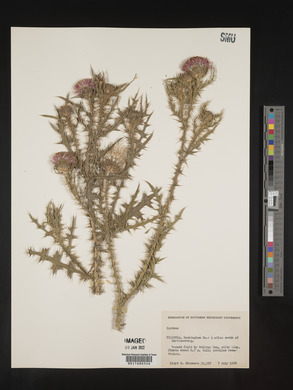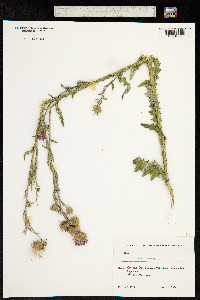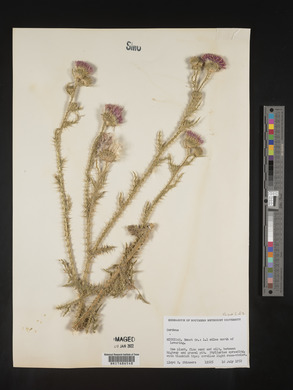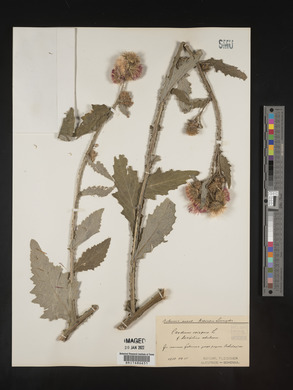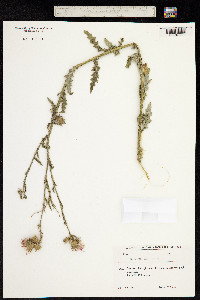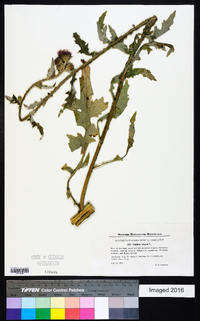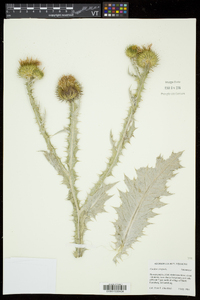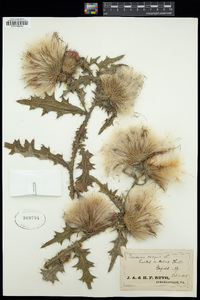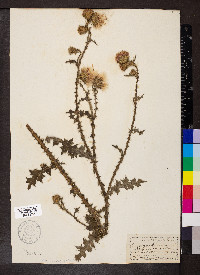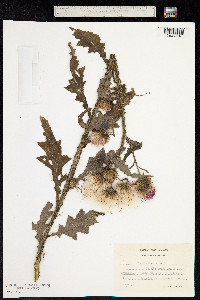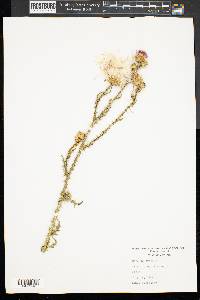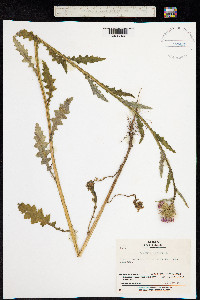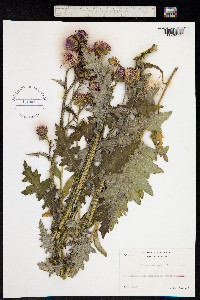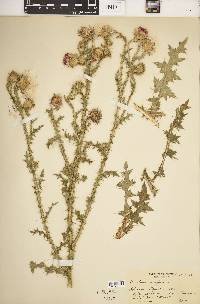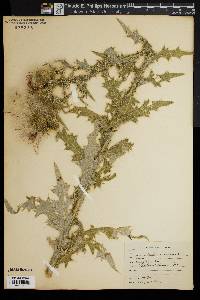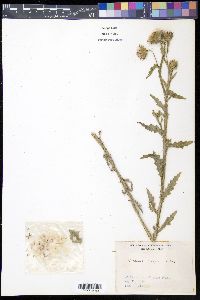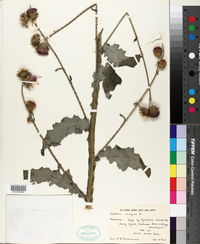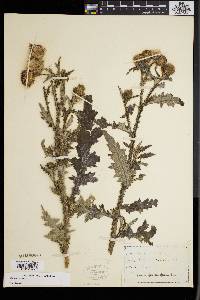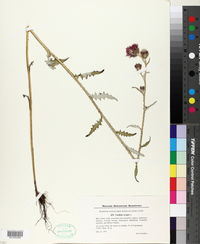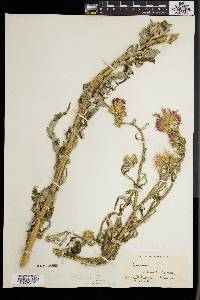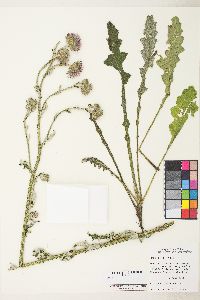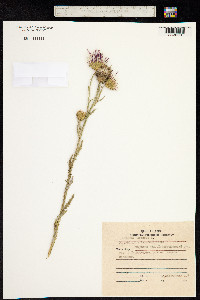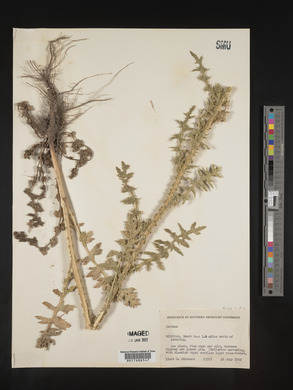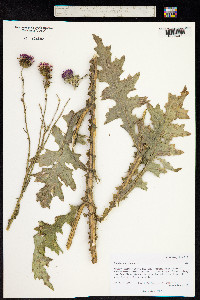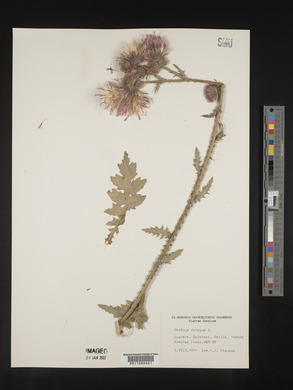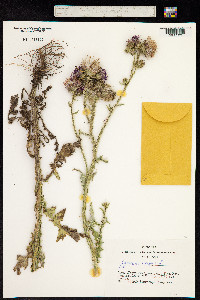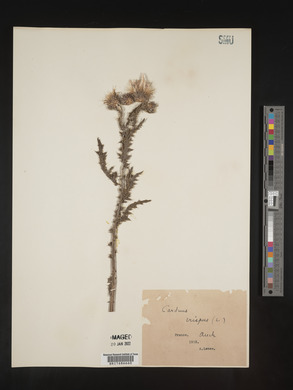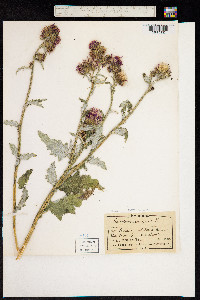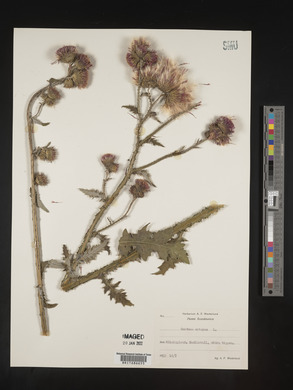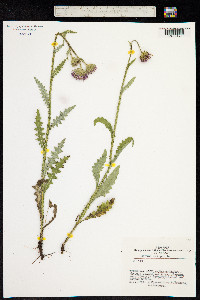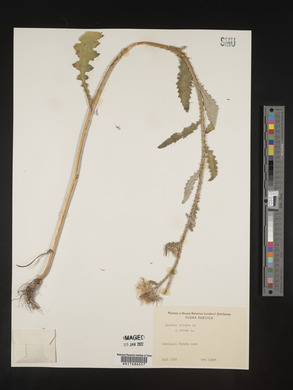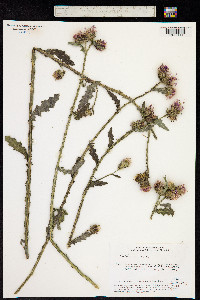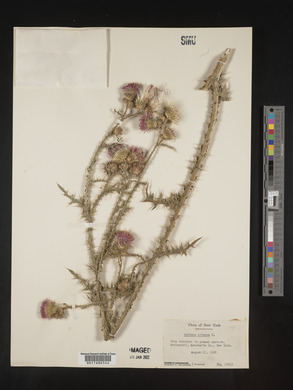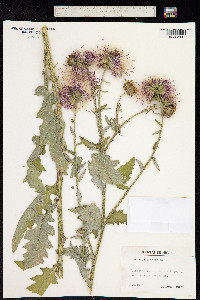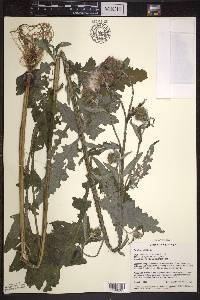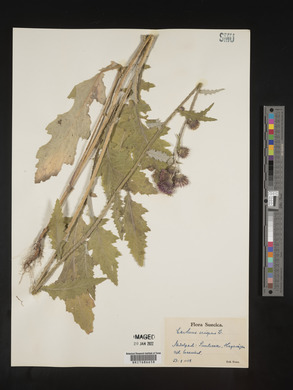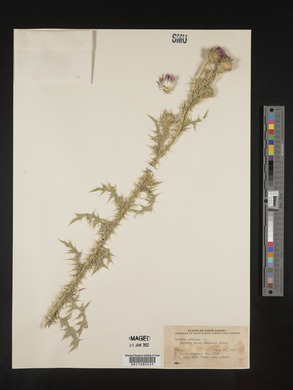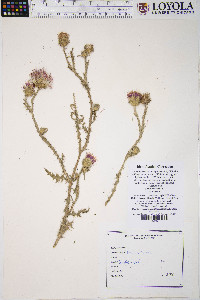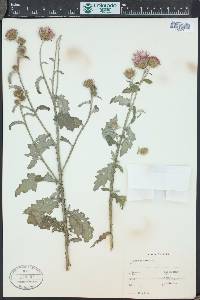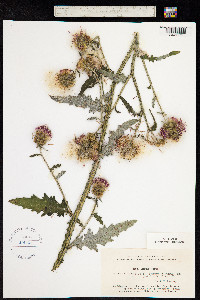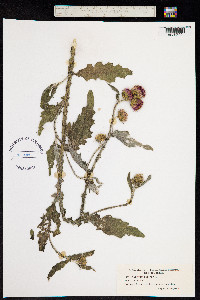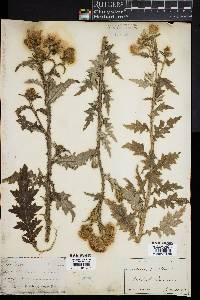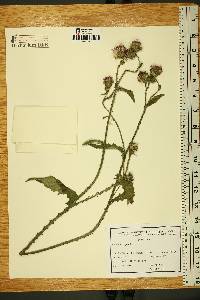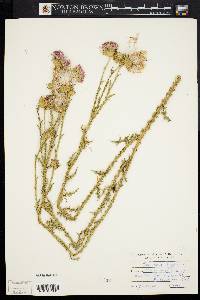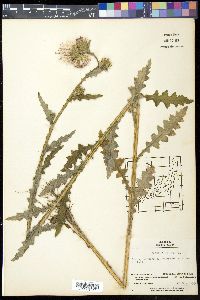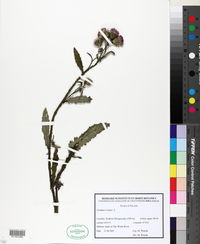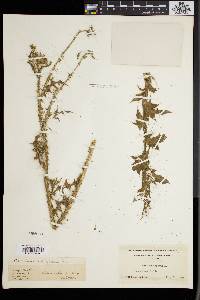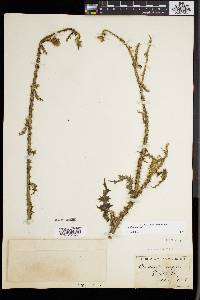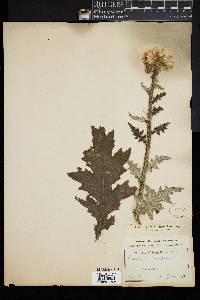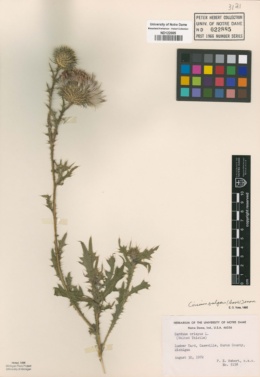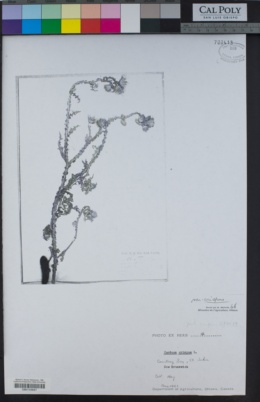Carduus crispus
|
|
|
|
Family: Asteraceae
Curly Plumeless-Thistle
|
Annuals or biennials, 30-150 cm. Stems openly branching, villous with curled, septate hairs to nearly glabrous, spiny wings to 1.5 cm wide, wing spines to 3 mm. Leaves: basal tapering to winged petioles, blades 10-20 cm, margins spiny-toothed to ± shallowly pinnately lobed; cauline sessile, gradually smaller, margins often more deeply divided, marginal spines to 3 mm; abaxial leaf faces ± tomentose with long, one-celled hairs and/or long, curled, septate hairs along veins or glabrate; adaxial faces sparsely hairy or glabrate. Heads borne singly or in groups of 2-5, 15-18 mm. Peduncles spiny-winged to near apex or throughout, to 4 cm. Involucres ± spheric, 12-17 × 12-17 mm. Phyllaries narrowly lanceolate, outer and middle with appressed bases ca. 1 mm wide and appressed to spreading appendages 0.5-1 mm wide, spine tips 1-1.5 mm, inner with unarmed, straight tips. Corollas purple or ± white, 11-16 mm, lobes ca. 3.5 times length of throat. Cypselae light brown to gray-brown, 2.5-3.8 mm; pappus bristles 11-13 mm. 2n = 16 (Sweden). Flowering summer-fall (Jul-Sep). Weed of waste ground, pastures, roadsides, fields; 0-500 m; introduced; B.C., N.B., N.S., Ont., Que.; N.J., Pa.; Eurasia. Canadian distributions above follow R. J. Moore and C. Frankton (1974); I have not seen those specimens. Carduus crispus has been reported also from Arkansas, Connecticut, Iowa, Illinois, Maine, Maryland, Massachusetts, Missouri, New York, North Dakota, Ohio, Rhode Island, Vermont, Virginia, and West Virginia; I have not seen specimens from those states. Two subspecies of Carduus crispus have been recognized (S. M. A. Kazmi 1964); those are not differentiated here. Carduus crispus closely resembles the much more common C. acanthoides. Some published records of C. crispus are probably C. acanthoides. Although the degree of spininess and tough versus brittle stems were used as key characters (A. Cronquist 1980; H. A. Gleason and A. Cronquist 1991) to differentiate the two taxa, both characters are subjective, and the second is impractical with dry material.
Biennial, 6-20 dm, rather weakly spiny, the stem brittle; lvs broader and less deeply cleft than in no. 2 [Carduus acanthoides L.], cottony-tomentose beneath at least when young; heads clustered at the ends of the often short branches, similar to those of no. 2, but less pungent and avg a little smaller, the invol 1.2-1.7 cm; peduncles often wingless in the distal several mm; 2n=16. Roadsides and waste places; native of Eurasia, sparingly intr. in our range, chiefly about the larger ports. June-Sept. Gleason, Henry A. & Cronquist, Arthur J. 1991. Manual of vascular plants of northeastern United States and adjacent Canada. lxxv + 910 pp. ©The New York Botanical Garden. All rights reserved. Used by permission. |

